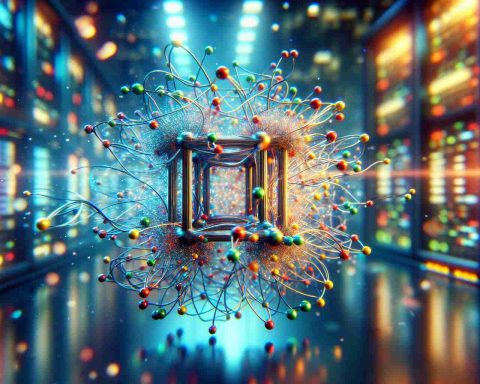Introduction
Recent advancements in quantum technology have highlighted the significance of quantum transport in various applications. However, understanding the underlying mechanisms of steady quantum transport remains a challenge due to the presence of diverse scales in the transport process. Novel approaches are required to bridge the gap between the microscopic and macroscopic aspects of quantum transport and explore non-equilibrium physics on multiple levels.
Quantum Simulators for Studying Quantum Transport
The use of quantum simulators such as superconducting qubits offers a promising avenue to investigate steady quantum transport. By leveraging these simulators, researchers can delve into the complex dynamics of many-body quantum systems more effectively than with classical computers. However, the study of non-equilibrium transport necessitates overcoming obstacles related to simulating thermodynamic baths accurately and manipulating bath properties to reflect desired characteristics.
Experimental Demonstration of Steady Quantum Transport
Drawing on insights from quantum chaos and pure-state quantum statistical mechanics, researchers have conducted experiments showcasing the emergence of steady quantum transport in superconducting processors. By preparing a single pure initial state in the processor, they observed the generation of inter-bath particle currents, a key indicator of non-equilibrium transport. The experiment revealed that these currents are independent of microscopic details, highlighting their typical nature, and become more stable with increasing system size.
Device Design and Dynamics
The experimental setup involved a ladder-type array of superconducting transmon qubits with adjustable coupling strengths between neighboring qubits. The system’s Hamiltonian, characterized by non-integrable and mixing properties, conserves the total particle number within the array. This design allowed for the tunability of current flow through the system, providing a flexible platform for investigating quantum transport properties.
By exploring macroscopic quantum transport in superconducting processors, researchers aim to advance our understanding of non-equilibrium quantum dynamics and pave the way for future developments in quantum technology.
Enhancing Understanding through Multiscale Analysis
In the realm of exploring macroscopic quantum transport in superconducting processors, one significant aspect that researchers are focusing on is the multiscale analysis of transport phenomena. This involves considering various scales within the system, from the individual qubit level to the collective behavior of the processor as a whole. By integrating different scales in the analysis, scientists can gain a more comprehensive understanding of how quantum transport manifests at both the microscopic and macroscopic levels.
Unraveling Quantum Coherence Effects
A key question that arises in the study of macroscopic quantum transport is how quantum coherence effects impact the overall transport dynamics in superconducting processors. Quantum coherence, which refers to the ability of quantum systems to exist in a superposition of states, plays a crucial role in determining transport properties. Researchers are investigating how coherence effects evolve over time and influence the flow of particles within the processor. Understanding these effects is essential for accurately predicting and controlling quantum transport behavior.
Challenges in Maintaining Quantum Coherence
One of the major challenges associated with exploring macroscopic quantum transport in superconducting processors is the preservation of quantum coherence over extended periods. External factors such as environmental noise and energy dissipation can lead to decoherence, causing the loss of quantum information and disrupting transport processes. Researchers are actively working on developing strategies to mitigate decoherence effects, ranging from system engineering approaches to novel error-correction techniques. Overcoming these challenges is crucial for realizing the full potential of superconducting processors in quantum transport studies.
Advantages and Disadvantages of Superconducting Processors for Quantum Transport
Superconducting processors offer several advantages for studying macroscopic quantum transport, including scalability, controllability, and compatibility with existing quantum computing architectures. These processors can be easily integrated into quantum experiments and allow for precise manipulation of transport parameters. However, disadvantages such as susceptibility to external interference and limitations in coherence times pose significant hurdles for achieving robust and reliable quantum transport measurements. Improving coherence times and reducing noise sources are ongoing areas of research to enhance the performance of superconducting processors in quantum transport studies.
Suggested Related Links
– Quantum Technology
– Superconductors Research











